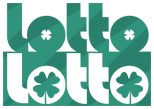Statistics for Lotofácil
Statistics of real draws
Lotofácil (until the draw 3375 on
Apr 24, 2025)
General frequency
Total occurrences of each number
Number
Actual frequency
Expected frequency
20
10
25
11
13
24
14
1
3
4
5
12
2
22
9
18
19
15
21
7
17
6
23
8
16
|
No.
|
Actual
occurrences
|
Expected
occurrences
|
Last
draw
|
Longest
interval
|
Current
interval
|
Average
interval
|
|
20
|
2122
|
2025.0
|
3375
|
9
|
0
|
1.59
|
|
10
|
2112
|
2025.0
|
3374
|
9
|
1
|
1.60
|
|
25
|
2093
|
2025.0
|
3375
|
12
|
0
|
1.61
|
|
11
|
2074
|
2025.0
|
3374
|
7
|
1
|
1.63
|
|
13
|
2056
|
2025.0
|
3373
|
8
|
2
|
1.64
|
|
24
|
2054
|
2025.0
|
3375
|
9
|
0
|
1.64
|
|
14
|
2051
|
2025.0
|
3374
|
12
|
1
|
1.65
|
|
1
|
2037
|
2025.0
|
3375
|
8
|
0
|
1.66
|
|
3
|
2035
|
2025.0
|
3375
|
9
|
0
|
1.66
|
|
4
|
2035
|
2025.0
|
3374
|
8
|
1
|
1.66
|
|
5
|
2030
|
2025.0
|
3374
|
10
|
1
|
1.66
|
|
12
|
2026
|
2025.0
|
3375
|
10
|
0
|
1.67
|
|
2
|
2021
|
2025.0
|
3375
|
9
|
0
|
1.67
|
|
22
|
2021
|
2025.0
|
3375
|
8
|
0
|
1.67
|
|
9
|
2018
|
2025.0
|
3375
|
9
|
0
|
1.67
|
|
18
|
2018
|
2025.0
|
3374
|
9
|
1
|
1.67
|
|
19
|
2012
|
2025.0
|
3373
|
13
|
2
|
1.68
|
|
15
|
2003
|
2025.0
|
3375
|
10
|
0
|
1.68
|
|
21
|
2001
|
2025.0
|
3375
|
11
|
0
|
1.69
|
|
7
|
1986
|
2025.0
|
3375
|
11
|
0
|
1.70
|
|
17
|
1981
|
2025.0
|
3374
|
11
|
1
|
1.70
|
|
6
|
1973
|
2025.0
|
3374
|
11
|
1
|
1.71
|
|
23
|
1972
|
2025.0
|
3375
|
8
|
0
|
1.71
|
|
8
|
1964
|
2025.0
|
3375
|
11
|
0
|
1.72
|
|
16
|
1930
|
2025.0
|
3375
|
10
|
0
|
1.75
|
- The table shows data on how many times each number was drawn considering all draws of lotofácil (with the current matrix).
- Actual occurrences are the total real occurrences of the numbers in draws.
- Expected occurrences are the expected occurrences for each number according to mathematical probability.
- Last draw is the most recent draw in which the number was drawn.
- Longest interval is the longest gap between draws in which the number was drawn.
- Current interval is the current gap since the last draw in which the number was drawn.
- Average interval is the general average of intervals between draws in which the number was drawn (until the last draw in which the number was drawn).
- The actual and expected occurrences tend to get closer to each other the larger the sample.
Main
Results
Statistics
Wheels
Subscription


